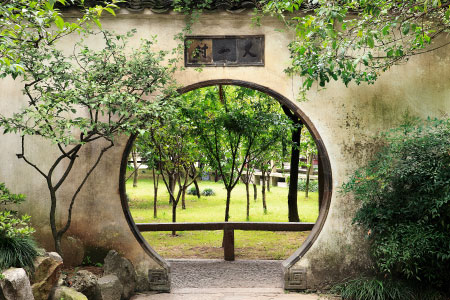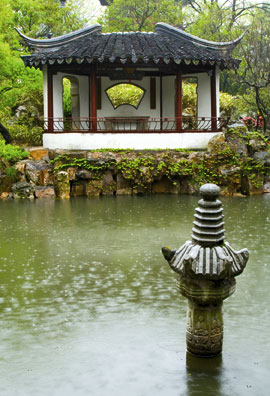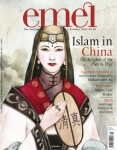
Flowing Serenity - The Chinese Garden
Issue 73 October 2010
The natural and refreshingly peaceful gardens of China are a sight to behold. Ethar El-Katatney takes a reflective stroll through uneven paths to discover what makes an authentic Chinese garden.
Walk into any Chinese garden, and you are immediately overwhelmed with the sight and smell of lush, seemingly untamed gardens. Stroll a little while along on uneven paths and you will eventually come across trees, rock piles, koi ponds and pavilions. The only sounds to be heard are the rushing water and the chirping birds. Like sculpture and paintings, the Chinese consider gardens a serious form of art.
Chinese gardens are the exception to Chinese architecture, which stresses the importance of symmetry. Like nature, the gardens are not structured, allowing the visitor to wander through as they please. Built and not planted, the principle underlying the composition of the garden is ‘flow,’ allowing the visitor to meditate and connect with nature, reflecting on life.
_________________________________________________________________

A garden in China must include buildings, which are then surrounded by rocks, plants and water. Of the buildings, the most common is the waterside pavilion—an imitation of ancient wooden water houses, which were supported on stilts. Koi fish are a popular choice in Chinese gardens.
_________________________________________________________________
Maggie Keswick, author of The Chinese Garden, explains that Chinese gardens “are cosmic diagrams, revealing a profound and ancient view of the world and of man’s place in it.” As the Chinese saying goes, “the garden is an artistic recreation of nature; a landscape painting in three dimensions.” Built for contemplation, artists and painters and poets have found them inspiring. Divided into three categories: the royal gardens, the public gardens, and the private gardens, it is the latter that has evolved into an art form today.
Although the gardens seem unplanned, the chaos is structured and aligns with Chinese principles of feng shui—a north-south axis is closely adhered to, and the principles of balance and harmony, as well as the law of opposites, are sought after. China’s three main religions influenced the creation of gardens: Confucianism stresses geometry, Taoism stresses lack of artificiality and the importance of the natural, and Buddhism stresses the importance of meditation.

A garden in china must include buildings, which are then surrounded by rocks, plants and water—an essential component of Chinese gardens are the rocks, which are both structural and decorative. The use of water is also a core element in Chinese gardens, and they are often crossed with a curved bridge.
Of the buildings, the most common is the waterside pavilion—an imitation of ancient wooden water houses, which were supported on stilts. These pavilions have scenic openings in them, designed in circle, square and even lotus shapes—directing the eye to a certain ‘scene’ of the garden.
Even the choice of trees is thought about clearly. Bamboo is popular, because it symbolises strength and resilience. Lotuses symbolise purity and pine symbolises tenacity and persistence.
In China, the more intricate the designs, the more important the garden; such as setting up chimes and incense burners and carving intricate designs on the pavement or creating patterns on them with coloured pebbles. Some gardens are even purposely built to reflect a concept, painting or poem.
Suzhou, an hour away from Shanghai, is most well known for its gardens. During the Tang dynasty (618-907), the garden building reached its peak, and a manual on garden design was actually written in 634 by the painter-gardener Ji Cheng.
Today, 69 of Suzhou’s gardens are national cultural heritage sites, and nine of the gardens are on UNESCO’s World Heritage List.

The pavilions have scenic openings in them, designed in circle, square and even lotus shapes—directing the eye to a certain ‘scene’ of the garden.
Bookmark this |
|
Add to DIGG |
|
Add to del.icio.us |
|
Stumble this |
|
Share on Facebook |
|
Share this |
|
Send to a Friend |
|
Link to this |
|
Printer Friendly |
|
Print in plain text |
|


Comments
0 Comments